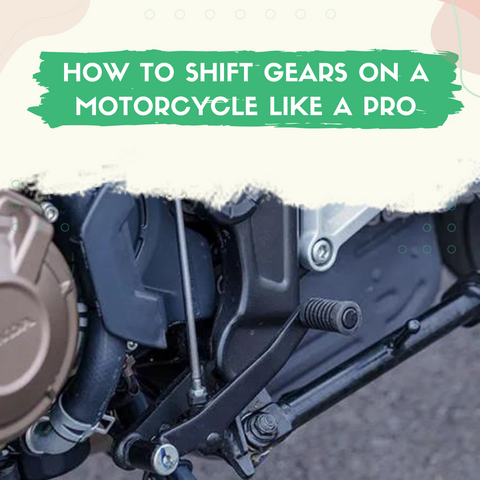
Updated: 14.05.25
Dirt bike gears turn raw power into thrilling rides. Born from UK motocross, dirt bikes use lightweight aluminum frames, long-travel suspensions, and 125cc–450cc engines, with gears optimizing performance across trails and tracks. Uncover gear facts and explore our kids’ ride-on motorbikes or dirt bike powerband guide!
1. Key Facts About Dirt Bikes
Dirt bikes, pioneered in UK motocross, combine lightweight frames, robust suspensions, and 125cc–450cc engines for off-road prowess. Gears (3–6, typically 5) balance speed and power, varying by type—trail, motocross, or pit bikes—for riders from kids to pros.
2. Do Dirt Bikes Have Gears?
Yes, most dirt bikes have 4–6 gears, with five being standard. Higher gears boost wheel speed for trails; lower gears deliver torque for climbs. Pit bikes often have 3–4 gears for simpler control.
3. The Gearbox: Power Meets Speed
The gearbox balances torque and acceleration with components like:
| Component | Function |
|---|---|
| Gear Clusters | Provide various gear ratios. |
| Shift Forks | Position gears for shifting. |
| Shift Drum | Controls shift fork movement. |
Related: How to Shift Gears Like a Pro
4. Variable Gear Counts
Dirt bikes vary: 4-gear bikes suit beginners, 5-gear models balance trail and track, and 6-gear bikes offer pros versatility. Pit bikes (3–4 gears) simplify clutch use, while 250cc dirt bikes typically have 5–6 gears. Electric dirt bikes, popular for eco-friendly rides, often use single-speed or automatic transmissions. See clutch tips for beginners.
5. High vs. Low Gears
High gears maximize speed on flat trails; low gears, paired with long-travel suspension, provide torque and absorb bumps for steep climbs. Match gears to terrain for optimal rides. Check out motorcycle hacks.
6. Dirt Bike Gear Shift Pattern
The universal shift pattern—first gear down, neutral between first and second, higher gears up—simplifies bike transitions. Neutral ensures safe stops. Learn more in 250cc dirt bike guide.
7. Clutch Use in Shifting
Clutch is mandatory for up-shifting but optional for down-shifting, offering flexibility. Up-shift at high RPMs (around 7,000); down-shift when power fades. Master shifting with pro clutch techniques.
8. Gear Maintenance Tips
- Inspect Regularly: Check gears for wear.
- Lubricate: Use quality lubricants to extend gear life, available at trusted retailers.
- Shift Smoothly: Avoid abrupt shifts to protect mechanisms.
- Consult Pros: Seek expert help for serious issues.
- Stay Safe: Wear helmets, gloves, and body armor for safe gear-intensive rides.
Related: Are Dirt Bikes Automatic?
9. Common Gear Misconceptions
- Higher Gears = More Power: High gears prioritize speed, not power.
- Clutchless Downshifting is Bad: It’s viable with skill.
- All Gears Are Equal: Each gear suits specific terrains and speeds.
10. Choosing the Right Dirt Bike for Gear Performance
Select a bike with gear counts matching your needs—4 gears for beginners, 6 for pros. Our kids’ ride-on motorbikes mimic real gear systems for safe learning.
Conclusion
Dirt bike gears, from shift patterns to torque balance, are engineering marvels. Master their mechanics to elevate your ride, whether racing or exploring. Rev up and enjoy the gear-driven thrill!
Frequently Asked Questions
Do dirt bikes have gears?
Yes, most dirt bikes have 4–6 gears, with five being standard for balanced performance.
How many gears do dirt bikes have?
Kids’ bikes have 3–4 gears, medium bikes 4–5, and full-sized bikes, like 250cc models, typically 5–6 gears.
What is the dirt bike gear shift pattern?
First gear down, neutral between first and second, and higher gears up—a universal pattern across bikes.
How do I shift a dirt bike?
Up-shift with the clutch at high RPMs (around 7,000); down-shift with or without clutch when power fades.
Why is neutral gear important?
Neutral, between first and second gears, allows safe stops without stalling, crucial for manual bikes.
Get in Touch 🚀
Loved our article on “5 Mind-Blowing Facts About Dirt Bike Gears”? Want more biking insights?
We’re here for all your kids’ ride-on toy questions! 🚗💨
Explore more at RiiRoo.com.
Or, chat with us via Live Chat for instant answers!










Share:
LEGAL AGE for 50cc Dirt Bikes: What You MUST Know!
The Secrets to Buying a CHEAP Dirt Bike: What Dealers Won't Tell You!